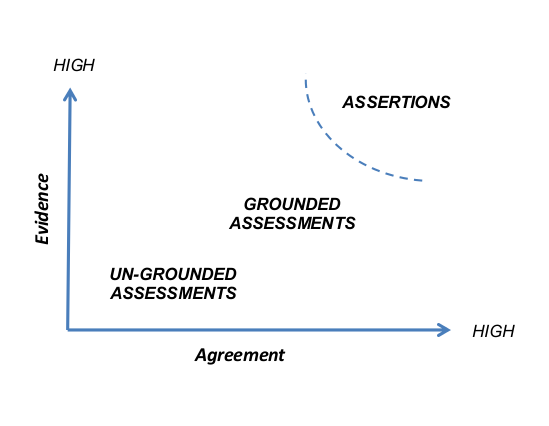Is there a process behind our heroes?
Joel Makower’s recent blog “Why aren’t there more Ray Andersons?” was an interesting read with great insights into who Ray was from other famous sustainability players. The ongoing conversation from that article is the basis of this post.
There was a PROCESS behind Ray Anderson’s “aha” moment on sustainability…
I only met Ray through his books, including “Business Lessons of a Radical Industrialist” and “Mid Course Correction. Among the many insights he shared was his personal process of transformation. In my interpretation, this was:
- The person – an innovator, entrepreneur and good leader (Jim Collins would say “Level 5”).
- The timing – that he was looking for a new challenge after 20 years of success. – an external prompt – ongoing demand from his customers – to do “more” about sustainability (persistently re-iterated by then research assistant Jim Hartzfeld).
- The do-able first step – to form an internal working party (proposed by Jim Hartfeld).
- A personal challenge to deliver internal inspiration (from Jim Hartzfeld to inspire the working party).
- The timely provision of inspiration (the friend who sent him “The Ecology of Commerce”).
- The realisation we CAN destroy eco-systems (in the book “The Ecology of Commerce”).
- The vision of entrepreneurial possibilities for business (in the book “The Ecology of Commerce”).
If disasters have multiple causes, the emergence of a hero may be the result of a process rather than a miracle. Is a more relevant question “What happened to turn Ray Anderson on to sustainability and how do we re-create the process?” And perhaps we need more Jim Harzfelds as well?
There was a process behind the “aha” moments that got me started, too…
What stopped me for many years was the assumption (I think based on mass media messages) that sustainability was a problem, that there were no potential solutions, and that the primary thing for me to do was use less.
What got me turned on was also a process :
- Turning 40 and asking “well what do I REALLY want for myself in the coming decades” (to make a difference reducing corporate burnout as a professional coach)
- Learning to listen to myself during my initial coaching studies
- Noticing that I was (reluctantly) interested in a Masters in Sustainability announced at lunchtime during graduate eCommerce studies
- Doing post graduate studies and being introduced to the books “Natural Capitalism”, “Mid Course Correction” and “Cradle to Cradle”
There was my serial “aha” (with a great inspiration from Ray Anderson included). I had been a supply chain systems consultant, and these particular books spoke to both my personal and business experience. Because of this experience, I believed (and still hold the assessment) that as an individual consumer I could not make a significant difference. Much as I loved my bush garden, I had no sense of power or possibility or connection to “this sustainability thing”.
What these three books gave me was HOPE – and a positive, explicit vision of practical ways our system could be AND WAS changing. These ways were congruent with my own knowledge of the inside operations of factories and warehouses in a range of industries.
That’s what activated me – HOPE and a specific positive vision.
Our emerging challenge…
In Innovation Diffusion terms, the challenge I see in front of us now is how to get this new way of doing business “across the chasm” to the Early Majority who are motivated differently from Innovators and Early Adopters. My experience in CleanTech circles is that the Innovators and Early Adopters have “got it”.
To me, if popular, powerful voices make “sustainability” look difficult and expensive to the Early Majority then that “chasm” will get wider, especially if they have to risk their reputation on “costly new programs”. So the more well-known people we can get to speak out about how straightforward, sensible and rewarding sustainability is when it’s done strategically to achieve win/win/win outcomes the better.
I assess that it’s also important to distill the systems changes required to get started into simple, powerful memes that suit our time. Easy, useful products and ideas get cross the “chasm” quite easily






